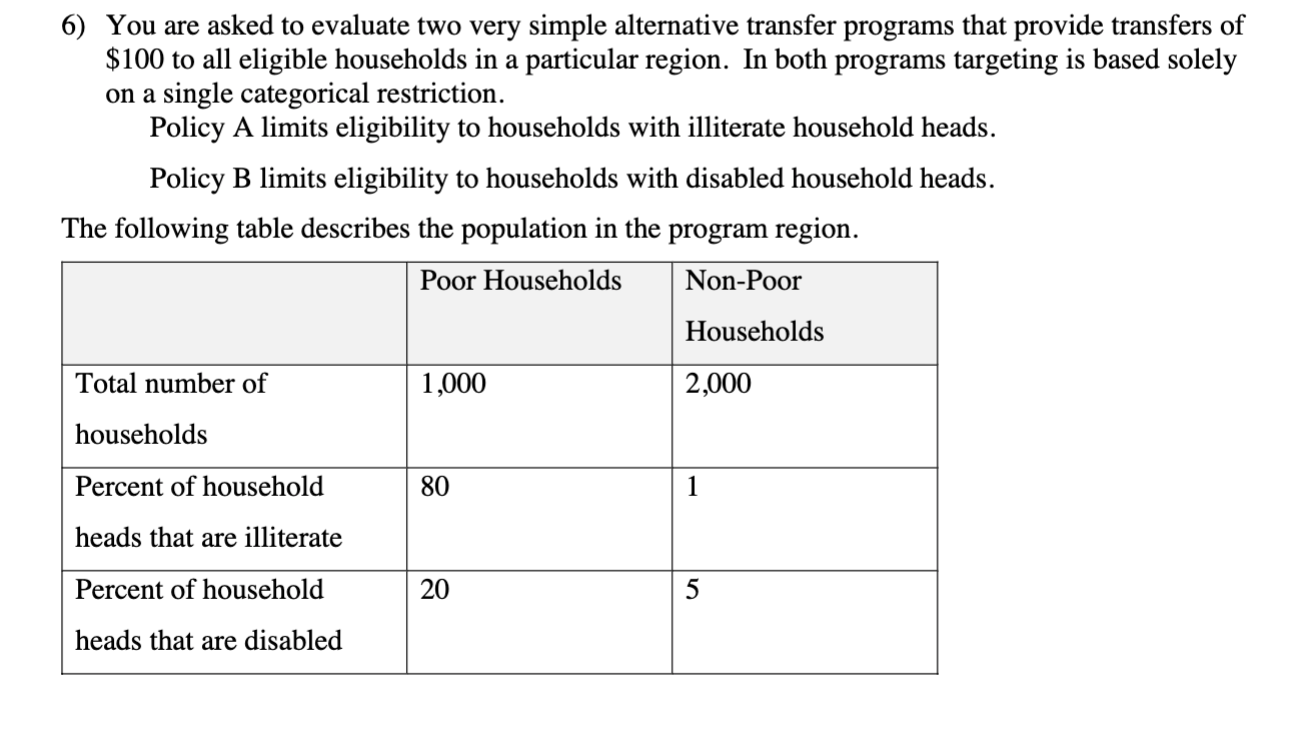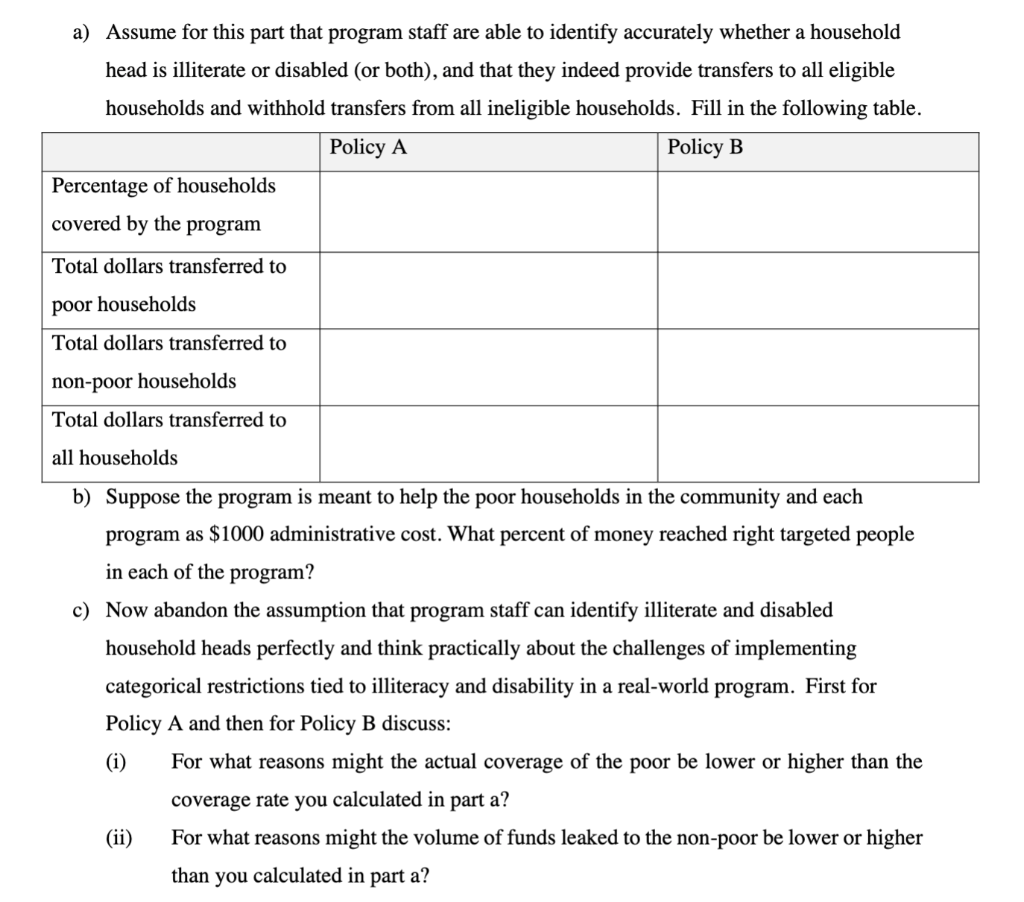

6) You are asked to evaluate two very simple alternative transfer programs that provide transfers of $100 to all eligible households in a particular region. In both programs targeting is based solely on a single categorical restriction. Policy A limits eligibility to households with illiterate household heads. Policy B limits eligibility to households with disabled household heads. The following table describes the population in the program region. Poor Households Non-Poor Households Total number of 1,000 2,000 households Percent of household 80 heads that are illiterate Percent of household 20 heads that are disabled a) Assume for this part that program staff are able to identify accurately whether a household head is illiterate or disabled (or both), and that they indeed provide transfers to all eligible households and withhold transfers from all ineligible households. Fill in the following table. Policy A Policy B Percentage of households covered by the program Total dollars transferred to poor households Total dollars transferred to non-poor households Total dollars transferred to all households b) Suppose the program is meant to help the poor households in the community and each program as $1000 administrative cost. What percent of money reached right targeted people in each of the program? c) Now abandon the assumption that program staff can identify illiterate and disabled household heads perfectly and think practically about the challenges of implementing categorical restrictions tied to illiteracy and disability in a real-world program. First for Policy A and then for Policy B discuss: (i) For what reasons might the actual coverage of the poor be lower or higher than the coverage rate you calculated in part a? (ii) For what reasons might the volume of funds leaked to the non-poor be lower or higher than you calculated in part a? 6) You are asked to evaluate two very simple alternative transfer programs that provide transfers of $100 to all eligible households in a particular region. In both programs targeting is based solely on a single categorical restriction. Policy A limits eligibility to households with illiterate household heads. Policy B limits eligibility to households with disabled household heads. The following table describes the population in the program region. Poor Households Non-Poor Households Total number of 1,000 2,000 households Percent of household 80 heads that are illiterate Percent of household 20 heads that are disabled a) Assume for this part that program staff are able to identify accurately whether a household head is illiterate or disabled (or both), and that they indeed provide transfers to all eligible households and withhold transfers from all ineligible households. Fill in the following table. Policy A Policy B Percentage of households covered by the program Total dollars transferred to poor households Total dollars transferred to non-poor households Total dollars transferred to all households b) Suppose the program is meant to help the poor households in the community and each program as $1000 administrative cost. What percent of money reached right targeted people in each of the program? c) Now abandon the assumption that program staff can identify illiterate and disabled household heads perfectly and think practically about the challenges of implementing categorical restrictions tied to illiteracy and disability in a real-world program. First for Policy A and then for Policy B discuss: (i) For what reasons might the actual coverage of the poor be lower or higher than the coverage rate you calculated in part a? (ii) For what reasons might the volume of funds leaked to the non-poor be lower or higher than you calculated in part a








